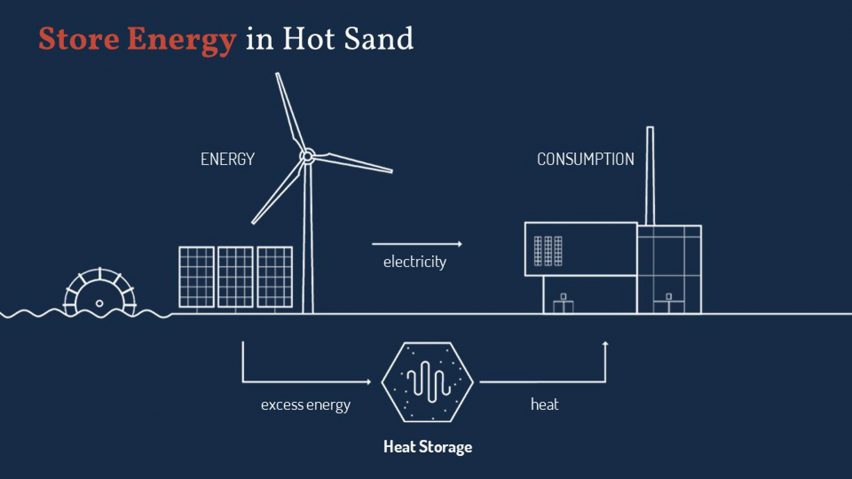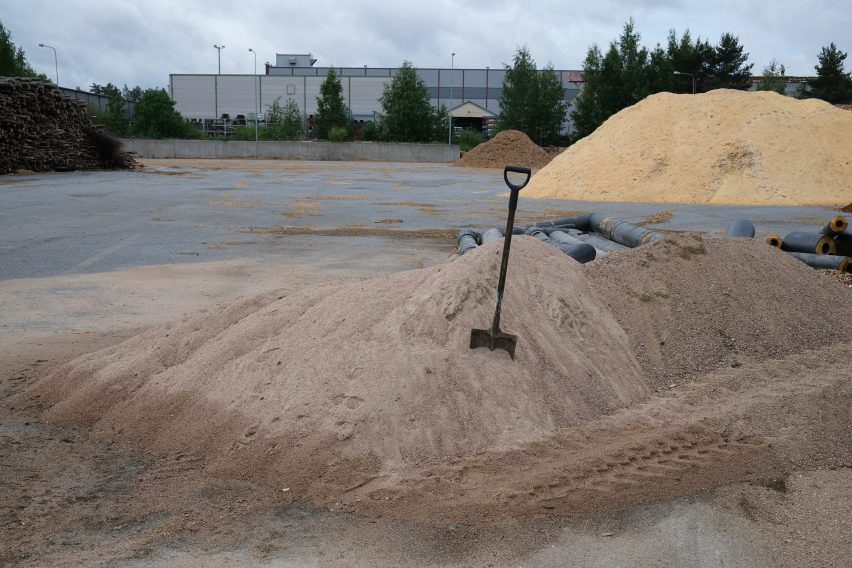World’s First Large-scale Sand Battery Goes Online in Finland
 Nov 10,2022
Nov 10,2022

 Basen
Basen

Finnish companies Polar Night Energy and Vatajankoski have built the world's first operational "sand battery", which provides a low-cost and low-emissions way to store renewable energy.
The battery, which stores heat within a tank of sand, is installed at energy company Vatajankoski's power plant in the town of Kankaanpää, where it is plugged into the local district heating network, servicing around 10,000 people.
Thanks to the war in Ukraine, and Finland’s subsequent decision to join NATO, Russia has halted all gas and electricity supplies to the Nordic country. Finland gets most of its gas from Russia, so the country has had to rapidly ramp up its switch to renewable forms of energy. While the country can install new solar panels and wind turbines, these energy sources also present huge challenges, including how to keep the lights on during the long, dark winters, when there is no sun. A startup called Polar Night Energy may have the answer – and it’s a surprising one.

While batteries are the obvious choice for energy storage, most large-scale battery storage systems are expensive, have a large physical footprint, and can only cope with a limited amount of excess power. However, a team of young Finnish engineers have just fired up the first commercial battery that uses sand, which they believe can solve many of the problems with battery storage. The battery, located in the town of Kankaanpää, is attached to the district heating system.
The battery is made of a four-metre by seven-metre steel container that contains hundreds of tonnes of sand. The sand is heated to a temperature of between 500 and 1,000 degrees Celsius using renewable electricity. The process uses resistive heating where hot air is generated and circulated in the sand using a heat exchanger. Using very little energy, the sand can be kept hot for months. When energy is needed, the battery discharges the hot air, which is used to warm water which is then pumped around homes, offices, and even the local swimming pool.
The company behind the technology, Polar Night Energy, says it helps to solve one of the key obstacles in the transition to full renewable energy: how to store it for use during times when the sun isn't shining or wind isn't blowing, and particularly for use in the wintertime when demand is high.
"Solar and wind power is basically already really competitive in terms of energy price per produced energy unit," Polar Night Energy co-founder and chief technology officer Markku Ylönen said.

"The only problem with them is that you can't really choose when it's produced."
He said that while lithium batteries are well suited for vehicles, "if we're talking about gigawatt hours or terawatt hours of excess electricity, it's not technically feasible to try to cover that with lithium batteries, and also the costs will be immense".
"Even if we dug out all the lithium in the world, we couldn't build batteries big enough to accommodate all the fluctuation in renewable energy production," Ylönen added.
Polar Night Energy's sand battery stores heat for use weeks or even months later. It works by converting the captured renewable electricity into hot air by using an industrial version of a standard resistive heating element, then directing the hot air into the sand.
The heat transfers from the air to the sand, which ends up at temperatures of around 500 to 600 degrees Celsius and retains that heat well. To unlock it for use, the process is reversed and the hot air funnelled into a heating system used for homes or industry.
According to Ylönen, the process is low-cost – sand is inexpensive so the main costs are related to equipment and construction of the steel storage tank.

It is also low-impact, with the only substantial greenhouse gas emissions being embodied emissions from construction and the transport of sand, which should come from a location close to the battery site.
And although there is a sand shortage related to the material's use in concrete and glass, Ylönen says the battery does not require this kind of fine-grain, high-quality sand.
The sand battery would most likely only be used to provide heat and not electricity due to the inefficiency of the conversion process, but according to Ylönen, the world's heating needs are great enough to justify having separate storage systems.
"The heating sector is something like one quarter or one third of the emissions of the world," said Ylönen. "Along with the transportation and food industries, it's among the largest sectors in terms of global warming."
The urgency of transitioning to renewable energy has increased with the Ukraine war, which has led to spiralling energy costs and has revealed Europe's dependence on Russian oil and gas.

Ylönen describes the sand battery as part of the smart and green energy transition, saying, “Heat storages can significantly help to increase intermittent renewables in the electrical grid. At the same time, we can prime the waste heat to usable level to heat a city. This is a logical step towards combustion-free heat production.”
Sand batteries are just the latest innovative battery technology that is hoping to bridge the gap between generation and usage for renewable energy. Other innovations in this space recently covered by Springwise include using old electric vehicle batteries to store solar and wind energy, storing energy in heat and compressed air, and a battery made using carbon dioxide.
 Solar Inverters What Are They And How Do They Work?
Solar Inverters What Are They And How Do They Work?
 What is the Difference Between LiFePO4 and Lithium-Ion Batteries?
What is the Difference Between LiFePO4 and Lithium-Ion Batteries?








 HOME
HOME


 You May Also Like
You May Also Like

 Tel
Tel
 Email
Email
 Address
Address